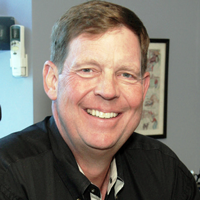Conditioned Air uses public rewards and peer pressure to improve safety and reduce costs.
"Being Safe Never Hurts" is the 2007 safety slogan we adopted for our company after reviewing almost 100 employee submissions. One reason we received so many entries was because 100 Safety Bucks were up for grabs to the winner.
Safety Bucks are a tangible, earnable, safe-conduct reinforcing, behavior- modifying reward for overall safe actions on the job. Employees can save them and redeem them for tools, televisions, and other items. A safety program such as Safety Bucks, with real teeth and a measurable benefit to employees and the company, costs money. But, not having a serious program costs much more — possibly a life or limb.
We recently added the Safety Bucks incentive to our safety program for several reasons. First, as our company has grown, my biggest fear has been the possibility of an employee losing his life or seriously injuring herself while at work. This extends to simply driving from job to job and even hurting or killing another person in a crash. As we have increased our workforce from 27 people to more than 120 people — with more than 80 vehicles on the road — the message of working and behaving in a safe manner has been harder and harder to keep on the top of everyone's minds.
Secondly, as we grew, our insurance premiums — both liability and workers' compensation — also grew to be a large part of our overhead costs. This, coupled with a few workers' compensation claims, pushed our "experience modification factor" to 1.2.
This modification factor determines whether we will pay above, at, or below 100 percent of our calculated workers' compensation premium based on our workforce and classifications. In this case, we were paying 120 percent of our calculated premiums. Clearly, our safety program and messages were not having the desired effect, and this was costing us dearly in premiums. We have never had a severe injury or death here, but it didn't take catastrophic cases to push our premiums to this unacceptable rate. Frequency of smaller claims and careless, avoidable accidents were enough to cost us bottom-line dollars.
We had a pseudo-safety program in place: weekly safety meetings, safety teams, and quarterly pay-outs if the team had had a safe month. If one person on the team had an injury or property- damage accident, the whole team lost their individual money ($25 per person) for that quarter. But the priority and recognition of safe behavior wasn't driven home.
In many companies, safety is viewed as a necessary evil, something that has to be done "just because." We, unfortunately, found ourselves right there. Also, I have heard others in ownership or management state that employees should be expected to work in a safe manner; it's part of the job. Why should we need to reward someone for what is to be a standard and expected behavior? I, too, feel this way, to a degree. But, I also believe strongly in catching people doing the right thing and publicly thanking them for it.
This is where the individually earned Safety Bucks and the team-earned quarterly incentive work to emphasize and reinforce our commitment to working safely. Think of it as advertising safe work habits to your internal customers; you have to make it top-of-mind for it to have an impact on your business.
Another reason we added Safety Bucks was to make safety more exciting. Let's face it, safety as a topic is fairly boring. Many people think that to be safe actually just gets in the way of doing the job. Why should I walk out and get the right ladder when I can stand on the top "NO STEP" and reach what I need? If not careful, supervisors and leaders can fall into this trap and overlook safety infractions for the sake of speed on a job.
To change this mindset, I turned to our COO, Keith Walker, to revise and modify components of the plan. Along with an expanded safety committee; OSHA training for all management, supervisors and lead personnel; and many other formalized procedures on a routine basis; he introduced the idea of Safety Bucks to us.
Safety Bucks come in the form of $5, numerically sequenced, multi-color, Conditioned Air bills. These are earned by everyone in the company on an individual basis for individual, safe behavior. They are handed out monthly in department meetings in front of others, so there is a public acknowledgement of safe work habits. Of course, any property-damage accident or work injury negates the Safety Bucks for that individual for that month and also makes the member's safety team ineligible for the $50 per-person quarterly, cash incentive. (We increased the quarterly amount from $25 to $50.)
These Safety Bucks can be saved and used to reduce a tool purchase made on an employee's behalf through the company; or used to buy merchandise from a supplier under contract to Conditioned Air for this purpose. That company is the Wenaas Corp. Merchandise in the customizable catalog ranges from logo-embroidered ball caps to Sony flatscreen televisions and computers. Do keep in mind that as with any extra pay above and beyond regular earnings, tax impact must be accounted for and paid as per IRS rules. Attention to details in this area counts.
The Safety Bucks program is a fun program and intended to be so. Out of the boring and into the fun; from back-of-mind to top-of-mind. And best of all, the premium savings from having our employee-modification rate reduced from 1.2 to .8 pays for the program and then some. Wouldn't I rather create a program that pays our employees a safety bonus and promotes a truly safer work environment than pay premiums into a perceived black hole? You bet I would. And our employees see this as a kind of perk with tangible benefits.
The combination of public rewards for safe behavior and the peer pressure not to do anything that jeopardizes the quarterly team incentive work together to keep safety at the forefront of job performance. Improved care and higher job quality result from this program as well. And personally, I rest a little easier at night knowing everyone has made it home safely this day, and chances are better now for a repeat tomorrow.
 Theo Etzel is the CEO of Naples, Fla.-based Conditioned Air. He is a seasoned business executive and passionate entrepreneur who believes in providing the highest level of customer care, services and products to his clients. For additional information, visit www.conditionedair.com.
Theo Etzel is the CEO of Naples, Fla.-based Conditioned Air. He is a seasoned business executive and passionate entrepreneur who believes in providing the highest level of customer care, services and products to his clients. For additional information, visit www.conditionedair.com.


 Theo Etzel is the CEO of Naples, Fla.-based Conditioned Air. He is a seasoned business executive and passionate entrepreneur who believes in providing the highest level of customer care, services and products to his clients. For additional information, visit
Theo Etzel is the CEO of Naples, Fla.-based Conditioned Air. He is a seasoned business executive and passionate entrepreneur who believes in providing the highest level of customer care, services and products to his clients. For additional information, visit 